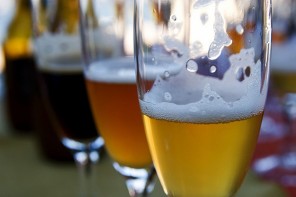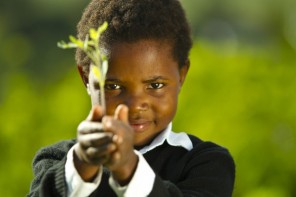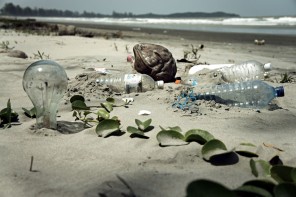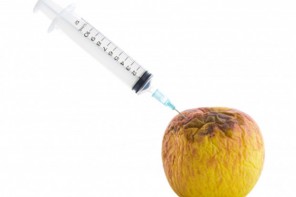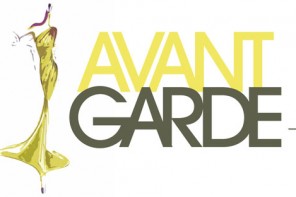Words by Janine Erasmus
South Africa was the first country in the world to adapt the principles of fair trade to its tourism industry and on World Tourism Day, celebrated annually on 27 September, businesses in the sector were encouraged to apply for certification.
World Tourism Day (WTD) was established in 1979 at the third session of the UN General Assembly, and came into operation in 1980. The event aims to promote growth and development of the global tourism industry and the date was chosen because it coincides with the adoption of the statutes of the UN World Tourism Organisation on 27 September 1970.
Since then each year’s celebrations have taken place with a theme, such as Tourism opens doors for women (2007), Tourism – Celebrating Diversity (2009), and Tourism Linking Cultures (2011).
In 2012, the theme for World Tourism Day was Tourism and Sustainable Energy: Powering Sustainable Development. Activities on the day focused on the importance of making tourism more sustainable to preserve natural resources for future generations.
In South Africa, September is designated as Tourism Month. The official WTD celebrations were held at the Mbashe Royal Village in the Eastern Cape with tourism minister Marthinus van Schalkwyk in attendance, and other events took place all around the country.
In Gauteng, the day was commemorated at Kwalata Lodge in the Dinokeng Game Reserve, just 40km north of Pretoria and an hour’s drive from Johannesburg.
Dignitaries present included Nkosiphendule Kolisile, the Gauteng MEC for economic development; Dawn Robertson, CEO of the Gauteng Tourism Authority (GTA); and Kathy Bergs, MD of Fair Trade in Tourism South Africa (FTTSA).
“The use of fossil fuels has a serious impact on the environment,” said Kolisile, “but we must win this war. If we do nothing, the generations that follow us will find nothing on this earth. We must leave behind more than what we found, rather than the opposite.”
He said that current energy usage is not sustainable, but added that it can be reversed if people work together or individually to do their bit.
As an example, Kolisile mentioned a programme running under Gauteng’s green economy programme, in which local minibus taxis are undergoing a conversion that will enable them to use both petrol and liquid petroleum gas. This will help taxi operators cut their running costs, but will also reduce emissions by 11% for carbon dioxide and 30% for carbon monoxide, according to the Automotive Industry Development Centre, a partner in the conversion initiative.
“These are the kinds of green initiatives that we must encourage,” Kolisile said, “and everyone must contribute – we don’t want any spectators on this journey. Our kids must also be encouraged to break the rules, because we need new ideas and new solutions.”
Tourism benefits communities
Dinokeng and other facilities are on the doorstep of Gauteng’s urban centres and are within easy reach, Kolisile added, so the more tourists that visit these areas, the more the local communities will benefit.
GTA CEO Dawn Robertson encouraged tourism businesses to apply for certification with FTTSA.
“This will help us to position Gauteng as a responsible tourist destination,” she said.
Fair trade tourism is a concept that encourages fair and responsible business practice by South African tourism establishments, meaning that tourists with a conscience can support an FTTSA-certified business and be assured that the business is run responsibly in social and environmental terms.
FTTSA was established in 2002 and was the world’s first fair trade programme that awarded certification to the tourism sector. According to the organisation, it is still the world’s only fair trade certification programme for tourism.
Like the fair trade initiative, it awards businesses that meet the stringent criteria – including fair wages and working conditions, commitment to skills development, and a respect for human rights, culture and the environment – with a special label which can be used as a marketing tool to take advantage of the growing global trend towards responsible tourism.
Although application is done easily online, the certification programme is rigorous, said FTTSA CEO Kathy Bergs, and not all businesses succeed the first time around. But they can still use the detailed report, which assesses 14 key areas of their business, to make significant improvements to their operations.
“We’ve spent the past decade developing the process of certification and raising awareness of the programme,” said Bergs. “Recently we signed an agreement with the Swiss government that will help us to scale up our operations and do intensive marketing.”
Bergs mentioned that the organisation plans to expand its activities to the other countries in Southern Africa.
FTTSA helps those who successfully achieve accreditation to market their business in various ways, including visibility at local and international travel trade shows, inclusion in the FTTSA directory, and networking opportunities.
Businesses interested in applying for the FTTSA seal can download a brochure (PDF, 2MB) or visit the website for more information.
Place of rivers
Dinokeng (Setswana, meaning “place of rivers”) is an area in northeast Gauteng earmarked for eco-tourism, job creation and social upliftment by the provincial government.
Dinokeng was formed when landowners in the area willingly took down their fences and merged their lands into the reserve, which currently covers about 18 500 hectares. It’s the only free-roaming Big Five game reserve in the province and is unique in that it is made up of individually owned properties. The initial stage comprised 12 000 hectares from 88 properties.
Although the land was used mainly for farming in the past, recent years have seen a shift towards rehabilitating it for eco-tourism. Participants in the Dinokeng project have undertaken to stop any agricultural activity on their land and commit to tourism development.
The greater Dinokeng area encompasses tourist-oriented areas such as Cullinan and Roodeplaat, and covers about 280 000 hectares.
Most of the animals have been brought in from other areas. Besides the Big Five – lion, rhino, elephant, buffalo and leopard – the reserve is home to giraffe, zebra, kudu, eland, blue wildebeest, warthog, hartebeest, and many more, as well as more than 300 bird species.
In August Dinokeng officially became a big five reserve when four buffalo bulls were released into the area. Earlier in September the first cheetah was introduced.
Other Dinokeng activities to mark WTD included a visit to the local communities of Mandela Village and Steve Bikoville, where media were introduced to various upliftment projects supported by Kwalata, among them a flourishing plant nursery and an art school. A tree-planting ceremony took place in a children’s park in Steve Bikoville.
In the game reserve, an Australian eucalypus tree was cut down as part of a clearing operation in Kwalata.
“This tree has no natural enemies in South Africa,” said ecologist and Dinokeng deputy director Nico Grobler, who was on hand to witness the event, “so it grows uninhibited. It has a very strong and deep tap-root system and can consume up to 400 litres of water a day.”
No indigenous plants will grow under a eucalyptus, said Grobler.
The wood of the felled eucalyptus will not go to waste – it will be used for firewood, or given to local artists for carving.





